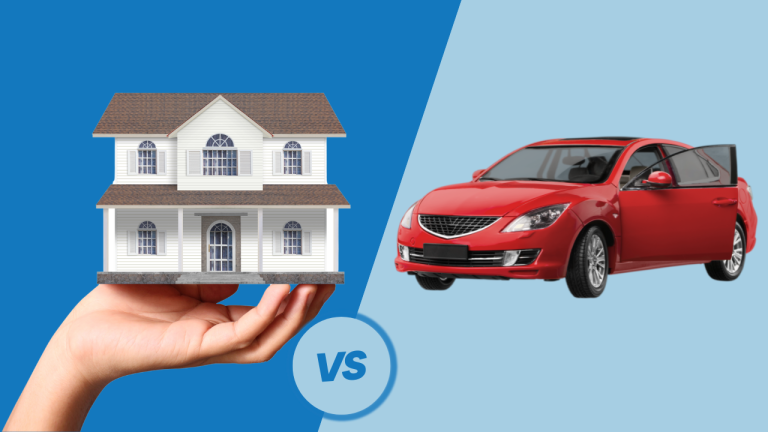How can i get rid of my FHA MIP?
Despite what you’ve heard, FHA MIP just isn’t permanent.
Some homeowners can easily let their mortgage insurance fall off; the others have to refinance out of it.
With mortgage rates still low, and home values rising, the majority are choosing to do the latter. Homeowners are saving hundreds monthly, even though they accept a higher rate.
Eliminating FHA MIP is a big deal. Willing to start? You should check your eligibility for a new, PMI-free mortgage via a refinance.
How long does FHA MIP last?
FHA loans fall under two categories: individuals with case numbers issued by June 3, 2013, and applications dated from then on.
FHA MIP cancellation depends upon this classification because that’s when FHA rules changed.
- FHA loans for which you completed an application after June 3, 2013
- FHA loans for which you completed an application prior to June 3, 2013
How exactly to cancel FHA mortgage insurance
Major of FHA homeowners today have a loan with the following characteristics
- Opened after June 2013
- Less than 10% down original down payment
- 30-year loan
Such a loan isn’t entitled to automatic mortgage insurance cancellation. The great news is that we now have no restrictions on refinancing out of FHA right into a conventional loan without PMI. You will find never any prepayment penalties on FHA loans, to help you refinance any time you want.
House values have risen considerably within the last couple of years. A home you put just 3-5% down on a few years ago could have sufficient equity to refinance without dealing with new PMI.
You simply need about 20% equity to do this.
Am I entitled to FHA MIP cancelation?
If you received your FHA loan before June 2013, you meet the criteria for MIP cancelation after five years.
You’ll want 22% equity in the property, and also you should have made all payments on time.
For homeowners with FHA loans issued after June 2013, you have to refinance right into a conventional loan and also have a current loan-to-value of at 80% or greater.
Canceling conventional private mortgage insurance (PMI)
You have significantly more options to cancel mortgage insurance when you have a conventional (nongovernment) loan with PMI.
You can simply wait for it to fall off. For legal reasons, lenders must cancel conventional PMI when you reach 78% loan-to-value.
Many home buyers choose a conventional loan, because PMI drops, while FHA MIP typically does not.
Remember that most lenders base the 78% LTV on the last appraised value. If your home value has truly gone up substantially, contact the existing servicer and check its requirements to cancel early.
The servicer may require a brand new appraisal, or depend on their particular internal valuation tools to determine your home’s up-to-date value.
You can even cancel conventional PMI with a refinance. The appraisal for your refinance loan serves as proof of current value. If your loan amount is 80% or less of your overall value, you don’t incur new PMI.
Current FHA MIP rates
2018 FHA MIP rates are as follows for 20-, 25- and 30-year FHA loans.
FHA loans with terms of 15 years or less be eligible for reduced MIP, as low as 0.45% annually.
Additionally, there is an upfront mortgage insurance premium (UFMIP) needed for FHA loans corresponding to 1.75% of the loan amount.
You might be eligible to a partial FHA MIP refund if refinancing into another FHA loan within 3 years.
Refinancing into lower FHA MIP
You can use a conventional refinance to get rid of your FHA loan insurance altogether, or you can lessen your mortgage insurance premium by refinancing into another FHA loan.
You might have a higher rate of MIP than what’s on the market. Listed here is a history of FHA MIP.
- Prior to January 2008: 0.50% annual MIP
- October 2008: 0.55% annual MIP
- April 2010: 0.55% annual MIP
- October 2010: 0.90% annual MIP
- April 2011: 1.15% annual MIP
- April 2012: 1.25% annual MIP
- April 2013: 1.35% annual MIP
- January 2015: 0.85% annual MIP
If you received a loan in January 2013, as an example, you might refinance into today’s lower MIP and save yourself $40 monthly per $100,000 borrowed. Plus, you might save yourself much more by getting a lower mortgage rate.
Remember, that your FHA MIP will end up noncancelable since your new loan will originate after June 2013, when FHA MIP rules changed.
Reduced upfront and monthly MIP for several refinancing homeowners
If you received your FHA loan ahead of May 31, 2009, you can receive lower MIP rates via an FHA streamline refinance.
Eligible candidates receive annual MIP of 0.55% (standard is 0.85%) and reduced upfront MIP of 0.01% (standard is 1.75%).
That’s a savings of $3,480 upfront and $50 per month on a $200,000 loan.
A word to homebuyers: Deciding between FHA MIP and conventional PMI
The most obvious advantage to conventional PMI is that it drops off automatically – no refinance necessary. That’s not the case with FHA MIP.
Yet, many home buyers choose FHA and its particular mortgage insurance since it is more cost-effective. The following chart shows FHA and conventional PMI costs assuming 3.5% down.
While FHA MIP is noncancelable, it’s usually the cheaper choice for home buyers.
Are there lenders that specialize in FHA-to-conventional refinances?
Any lender that provides conventional loans by Fannie Mae and Freddie Mac will help you cancel your FHA MIP via a refinance.
Any FHA-approved lender might help you lessen your payments via an FHA streamline loan.
Look around to find the best rates. While most lenders in the U. S. offer conventional and FHA loans, each one will offer you different rates for them.
Is it possible to simply take cash out when you do a mortgage insurance elimination refi?
Some homeowners with a lot of equity developed might be eligible to tap into that equity via a cash-out refinance.
Conventional cash out loans enable you to simply take up to 80% of your home’s value. If that’s more than your existing balance, you can keep the supplemental income, plus, avoid PMI.
FHA also offers a cash-out offering, deemed the FHA cash out refinance. It allows loans up to 85% of your home’s value. But you will still pay FHA mortgage insurance. So it’s better to consider the conventional version first.
When home values rise, cancel your FHA MIP
Paying FHA mortgage insurance doesn’t need to be permanent. You simply have sufficient equity to refinance right into a conventional loan.
Based on the National Association of REALTORS®, the median home listed for sale in the U. S. was $269,600 in July 2018. That’s 4.5% higher than one year ago.
Some experts predict continued appreciation for years to come.
Which means more homeowners will maintain a position to refinance out of FHA, and very soon.
Once homeowners reach 20% equity based on current value, they are able to refinance right into a conventional loan — one that doesn’t require any mortgage insurance whatsoever.
Just how to refinance out of any home loan with mortgage insurance
The method to do this is straightforward. Get an estimate of value from an area real estate agent or loan officer. Online home valuation websites could be inaccurate, so be cautious with those.
See if you have around 20% equity based on your home’s estimated value. Make sure to add closing costs on your existing loan balance if you don’t desire to pay them out of pocket.
For instance , you bought a home three years ago.
- Original purchase price: $200,000
- Original FHA loan amount: $196,375
- Payment with FHA MIP: $1,186
After three years, you’ve paid off principal, along with your home’s value has risen. Both of these factors help you cancel your FHA MIP.
- New conventional loan amount: $188,000
- Current Value: $235,000
- Loan-to-value: 80%
- New payment (no PMI): $898
Refinancing out of FHA MIP can yield substantial savings. Homeowners who received an FHA loan prior to January 2015 are paying quite high FHA mortgage insurance premiums. This is because FHA dropped premiums by 35% in 2015, but only for new FHA applicants.
Pre-2015 FHA home buyers could possibly get a double savings effect: they have been tapping into today’s low rates and canceling high FHA mortgage insurance, with one refinance.
How do you Begin?
Contact a lender and get yourself a rate quote. Mortgage quotes that includes an eligibility check and potentially an estimate of current home value.
Get yourself a quote and get started canceling your FHA MIP today.












